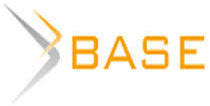DOI:
10.18413/2313-8971-2015-1-3-30-38
Unlike the traditional teaching that is done in a chronological order (the introduction of students in classes, processing of program content, repetition, practice and evaluation of outcomes of teaching), this model of inclusive education involves its planning and execution in the reverse design. Application of this model in teaching of mathematics in the junior primary school is presented for the processing of unit „Fraction” in the 4th grade. The method includes four stages: 1) identification of expected results, 2) determination of acceptable evidence that the results were achieved, 3) planning experience of active learning and effective teaching, and 4) determination of material and technical basis of teaching. The joint activities of teachers and students on the theme consists of seven steps: 1) frontal introduction of students to the theme Fractions, 2) the teacher's exemplary content processing, 3) group formation and division of tasks for working in groups, 4) self-learning analog content, 5) reporting group, 6) a cursory check of the content and 7) the following tasks. At the end of the class, the teacher determines the underlying and procedural quality of pupils' work and gives home assignments.
Keywords: numerator,
denominator,
fraction,
inclusive teaching,
interactive teaching,
exemplary teaching,
teaching in the reverse design.
Number of views: 6514 (view statistics)
Количество скачиваний: 8893
All journals
Send article
Research result. Pedagogy and Psychology of Education is included in the scientific database of the RINTs (license agreement No. 765-12/2014 dated 08.12.2014).
Журнал включен в перечень рецензируемых научных изданий, рекомендуемых ВАК (категория К2)

















While nobody left any comments to this publication.
You can be first.